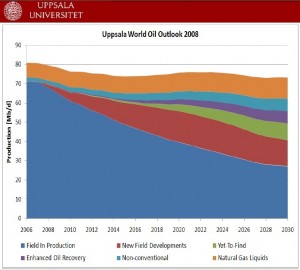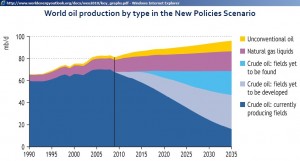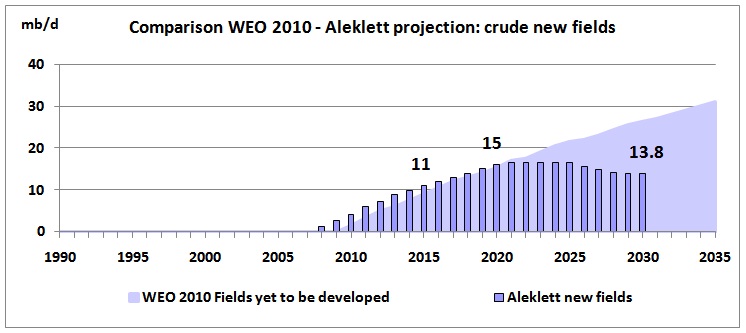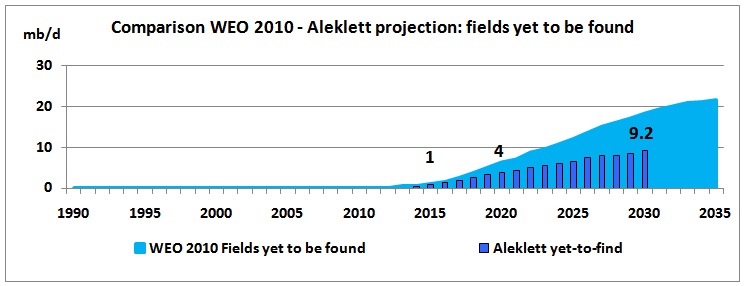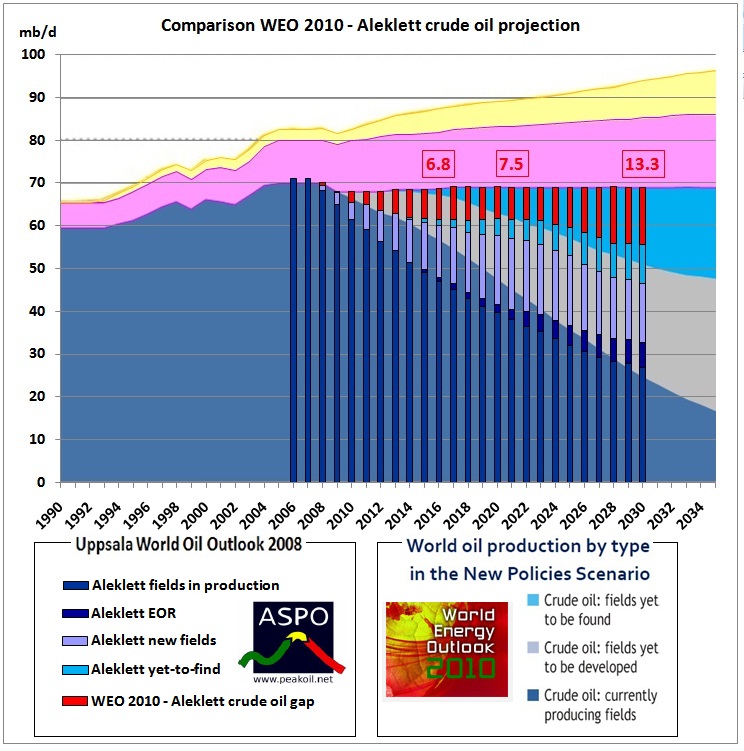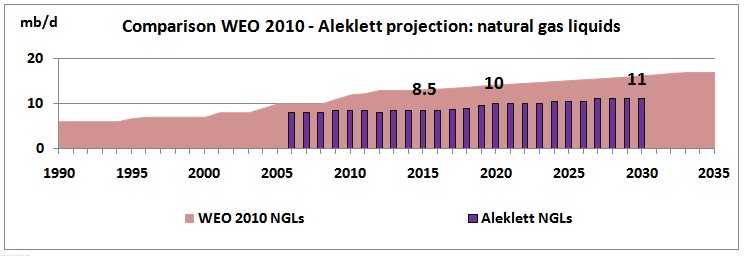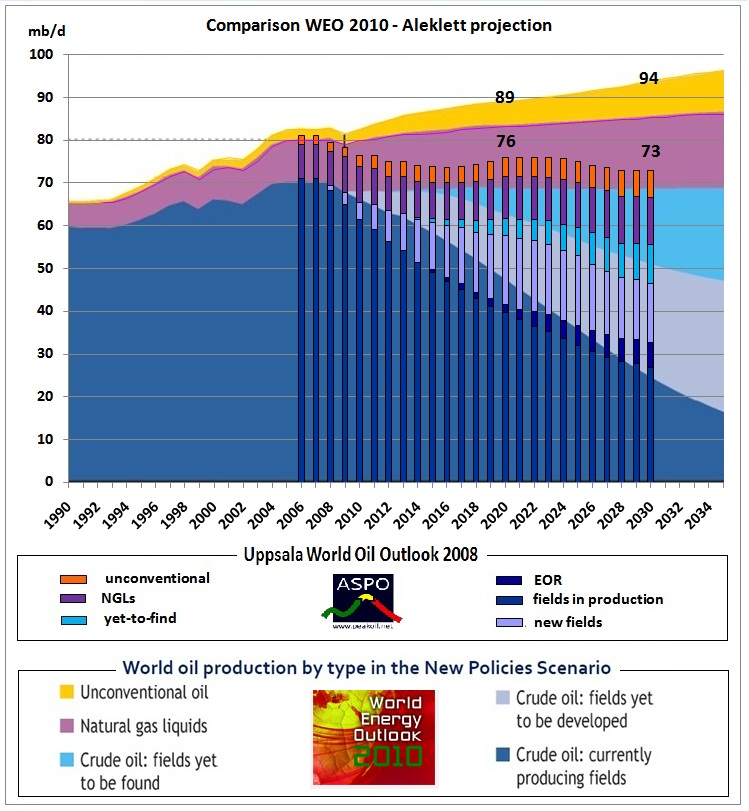If everything goes well, that is. Armed conflicts in oil producing countries, socio economic unrest and other unforeseen events impacting on oil supplies are not included in this estimate. The production curves shown here (whether ASPO or IEA) are upper (oil-geological) bounds.
In the Catalyst show “Oil crunch” the President of ASPO (Association for the Study of Peak Oil and Gas), Prof. Aleklett from the Uppsala University in Sweden, mentioned that the IEA’s extraction rates in their WEO 2010 are too high.
In a November 2010 lecture at Sydney Uni, he explained:
“In contrast [to the IEA], the Uppsala group has shown, using the same IEA data on existing reserves and expected future discoveries, that global oil production will fall, not rise. This is because the IEA has assumed unrealistically high rates of production from the oilfields remaining to be developed.”
http://sydney.edu.au/sydney_ideas/lectures/2010/professor_kjell_aleklett.shtml
Let’s have a look what that means for crude oil production from 3 types of oil fields: existing, new and yet-to-find.
We superimpose Prof. Aleklett’s Uppsala model (left) on the WEO 2010 – New Policies Scenario (right) for each type.
.
.
In the following graphs, the solid fill areas are from the WEO 2010, the vertical columns from Aleklett’s projection (only available up to 2030).
(1) Crude oil from existing fields
The decline in Aleklett’s estimate is initially steeper, 4% pa compared to the IEA’s 2% to 4% pa until 2020. The difference is around – 9 mb/d by 2015 and – 6 mb/d by 2020. Only after 2025 enhanced oil recovery (EOR) gives higher production figures than the IEA.
(2) New crude oil fields
Up to 2020 the estimates are not much different but then diverge considerably.
(3) Oil fields yet to be found
Aleklett’s estimate for 2020 is 2 mb/d less and then trends towards half of the IEA WEO 2010 figure.
Subtotal crude oil:
The gap between the WEO 2010 and ASPO is shown in red: – 6.8 mb/d by 2015, -7.5 mb/d by 2020 and – 13.3 mb/d by 2030. As data have been taken from the graphs, the geometric accuracy would not be better than 0.5 mb/d.
An overall decline of around 8 mb/d by 2020 is equivalent to – 1.1% pa, although decline rates up to 2015 seem to be higher. This suggests we could approach the IMF scenario 2 in the next years with oil prices increasing by up to 200%. This would mean another recession and subsequent drop in oil prices as has happened already after the 2008 oil price shock.
For completeness:
(4) Natural gas liquids
(5) Unconventional oil
All together now: crude oil and natural gas liquids
Conclusion: Previous ASPO warnings about a peak of oil production have materialized as confirmed by the IEA’s chief economist Fatih Birol in the Catalyst show “Oil crunch”. Therefore, get used to it: global crude oil production will decline. Global oil exports will go down even faster because oil demand in oil producing countries will increase. Business as usual with oil dependent infrastructure must be immediately stopped.
Previous related posts:
28/4/2011 IEA oil crunch warning: governments should have worked on it 10 years ago
http://www.crudeoilpeak.com/?p=3130
20/4/2011 IMF warns of oil scarcity and a 60% oil price increase within a year
http://www.crudeoilpeak.com/?p=3054
Other links:
What dwindling oil supplies mean for the world http://www.usyd.edu.au/news/84.html?newsstoryid=5934
Web site Global Energy Systems http://www.fysast.uu.se/ges/
Canada’s Oil Sands Resources and Its Future Impact on Global Oil Supply
www.tsl.uu.se/uhdsg/Publications/Soderbergh_Thesis.pdf
IEA’s World Energy Outlook http://www.iea.org/weo/
Catalyst show “Oil Crunch” http://www.abc.net.au/catalyst/oilcrunch/
